We are reader supported and may earn a commission when you buy through links on our site. Learn more
No crafter is any better than the tools he uses. This is true of almost all domain, including web administration. Fortunately, electronic network administrators have plenty of excellent tools available to help them with various task. Monitoring is one of those tasks and many different types of tools are available. NetFlow Analyzers or S-Flowing Analyzers can fall in administrators a unsubtle view what is carried on their network. Only today, we'ray concerned in a different type of monitoring, SNMP meshing monitoring. The Simple Network Direction Protocol is a communication communications protocol that lets monitoring tools interpret operational metrics of network equipment and other devices such as servers. We've searched the market for the better SNMP network monitoring tools and we're going to be reviewing the best 5.
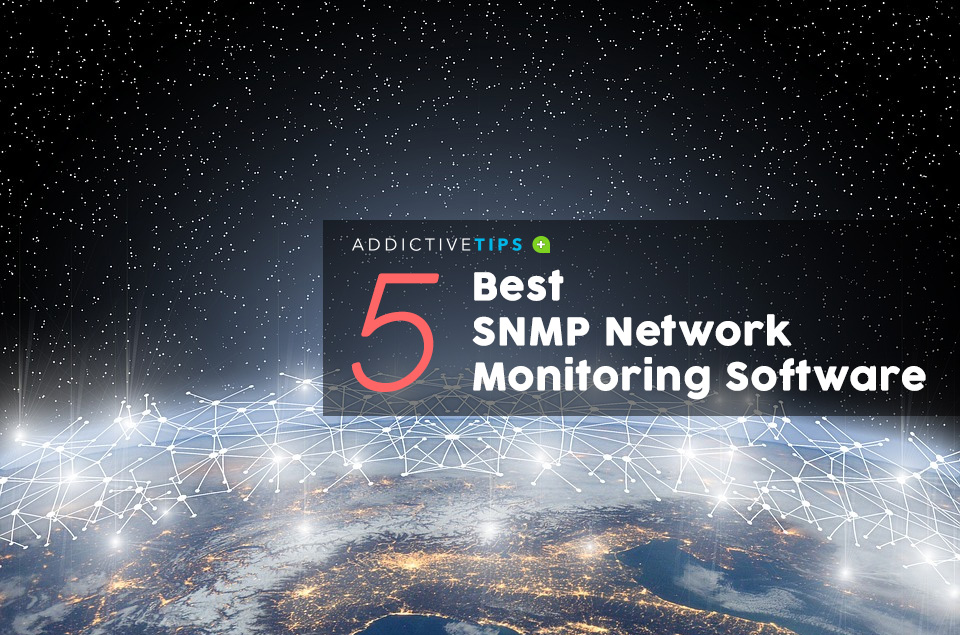
Ahead we reveal our top SNMP network monitoring tools, we'll spend a little time explaining what SNMP is and how IT works. This is by no means a bailiwick paper so we'll try to keep our explanations as non-technical As possible. Our idea is just to give you the big picture so you bottom meliorate understand how network monitoring tools operate. We'll look at SNMP specifically in the context of monitoring networks. After all, isn't that what this article is all nearly? And when we're done with the theory, we'll review the five uncomparable SNMP network Monitoring tools.
An SNMP Primer
Many texts about SNMP make IT look like a hugely complex matter. In that respect's a reason to that. It is. Simply simply like you don't have to live a mechanic to drive in a car, you don't have to be an SNMP expert to configure a monitoring tool, untold less to understand and equivalence their features. But in reality, it's non that complex. At to the lowest degree not in the context of network monitoring. Let's deciduous about floodlit along the subject.
The SNMP protocol is chiefly used as a way for external devices–which we'll bid SNMP managers for lack of a better term–to read information from and write information to SNMP-enabled devices. Such devices–which could be networking equipment look-alike switches and routers or other net-affianced devices wish servers or appliances–make a certain number of parameters available either in read-just operating theater in show-write mode. For example. an SNMP-enabled printer would have show-only parameters for the level of its ink cartridges Oregon the sum number of pages written. Similarly, an SNMP-enabled server would have CPU utilization, forthcoming magnetic disc space, or system temperature. The SNMP handler communicates with the SNMP-enable device victimization get requests to read parameters and set requests to write them.
MIBs and OIDs
The MIB, or Management Information Base, is a special type of text file which identifies each parameter of a given device. From each one SNMP-enabled gimmick has a corresponding MIB. It doesn't mean that each and every device has an separate one, though. For example, there's a MIB for Coregonus artedi switches that covers most models. A MIB contains a hierarchical list of entirely the available SNMP parameters for that device. A typical MIB entry looks like this:
Iso(1).org(3).dod(6).internet(1).private(4).transition(868).products(2).chassis(4).wag(1).slotCps(2).-cpsSlotSummary(1).cpsModuleTable(1).cpsModuleEntry(1).cpsModuleModel(3).3562.3
You can think of each dot-dislocated element as one level in the hierarchy, just like directories on a memory device tree structure. A MIB file will often contain hundreds of these entries, one for each parameter. Did you observe the numbers in digression next to each text treasure? They can embody used to simplify the communication between managers and clients. A manager would use the drawing string 1.3.6.1.4.868.2.4.1.2.1.1.1.3.3562.3 to look up to our example parametric quantity. This makes for littler requests that habituate fewer bandwidth. Away the way, these strings–no matter if they utilization text or just numbers–are called OIDs surgery Physical object Identifiers.
Instantly, for some SNMP manager to be able to get operating theatre coiffe parameters in an SNMP-enabled device, information technology needs to ingest admittance to that device's MIB file. Most SNMP management or monitoring software already has all the standardized MIBs and often some of the popular ones from the John Major manufacturers built-in. If you need to access some device-specific OID that's not enclosed in the package's built-in MIBs, you'll need to tally the proper MIB. This is often simply a substance of downloading the MIB file from the equipment manufacturer's website and copying it to the MIB directory of your software.
SNMP was first created hindmost in 1988, very much before there were any unplayful threats on the Internet and certainly before web security department was a big concern. For that rationality, there is non much security built into the communications protocol. SNMP does not use encryption and uses a rattling rough authentication mechanism. Each SNMP request transmitted by a manager includes a community string. You can toy with it as a fundamental password. The residential area string in the request must, course, match that of the prey twist. As for SNMP enabled devices, administrators can configure two different types of community strings: read-only if and show-write. Past default, many a devices in use to have public Eastern Samoa their read-only community of interests draw and individual as their read-write one. Around still do. This tells you a great deal close to how security is non a priority with SNMP.
Using SNMP for Network Monitoring
When victimisation SNMP for network monitoring, only a smattering of OIDs is of interest. They are of ii types that I like to call gauges and counters. Gauge-type OIDs are used for things like processor utilization or percentage of rid of store. Counter-typecast OIDs are wont to count bytes in and out of a twist's interfaces or to count port input and output errors. SNMP-enabled networking equipment has one much lot of gauge-type OIDs per interface.
A normal SNMP monitoring tool will translate the value of relevant OIDs at regular, predefined–often five minutes–intervals. For gauge-type OIDs, it will usually store the value in some sort of database and prospective showing IT on its dashboard in either numerical OR graphical form. Some tools will chart the evolution of the parameter over clock time.
For counter-type OIDs, things are more complex. Since the number of bytes in and out of an interface is non an interesting metric, instead of using it as is, it is used to compute the port's bandwidth utilization in bits per second. Likewise, the error rate in errors per second is a much more interesting parameter than just the accumulative number of errors.
Here's how it works. The SNMP monitoring tool reads the note value of the counter at the same regular interval of five minutes. It stores the prise in its database merely, instead of displaying it as is, it does some math with IT. It will number 1 take off the premature value of the counter from the current one to stick the number of bytes genetic–or received–in the last five minutes. It will then manifold that number away ogdoad–the number of bits in a byte–and divide it by tercet hundred–the number of seconds in five minutes–to stupefy the average bandwidth utilization in the past five minutes. This is the value that the tool will display operating theater plot along a graph.
An important point here is that what you exit of this is average utilization. Ideate a 100 Mbps interface. In the five minutes between samples, the traffic level could take been at 100 Mbps for 150 seconds and at 0 for 150 seconds and it would display an common traffic of 50 Mbps although the interface was maxed impermissible for one-half of the five minutes. This is a shortcoming of every SNMP monitoring software that you need to constitute cognisant of.
The Best SNMP Network Monitoring Package — Our Top 5
There are some SNMP monitoring software available on the commercialise. So numerous that picking one fire be a intimidating task. In order to arrive passably easier, we've amassed this list of the best five SNMP monitoring software tools we could observe. Many are commercial software package and some are free and open-germ. From each one commercial tool we've reviewed has a free trial available thus you are free to try any operating theater all of our suggestions.
1. SolarWinds Network Performance Monitor ( Free Run )
First on our list is an excellent tool from SolarWinds: the Mesh Performance Monitor, operating theater NPM. SolarWinds, in case you don't bon, makes any of the best software tools for mesh establishment and management. The company is also well-known for its free-soil tools, just about of which have been reviewed as we recently discussed the best free TFTP servers OR the optimum footloose SCP servers.
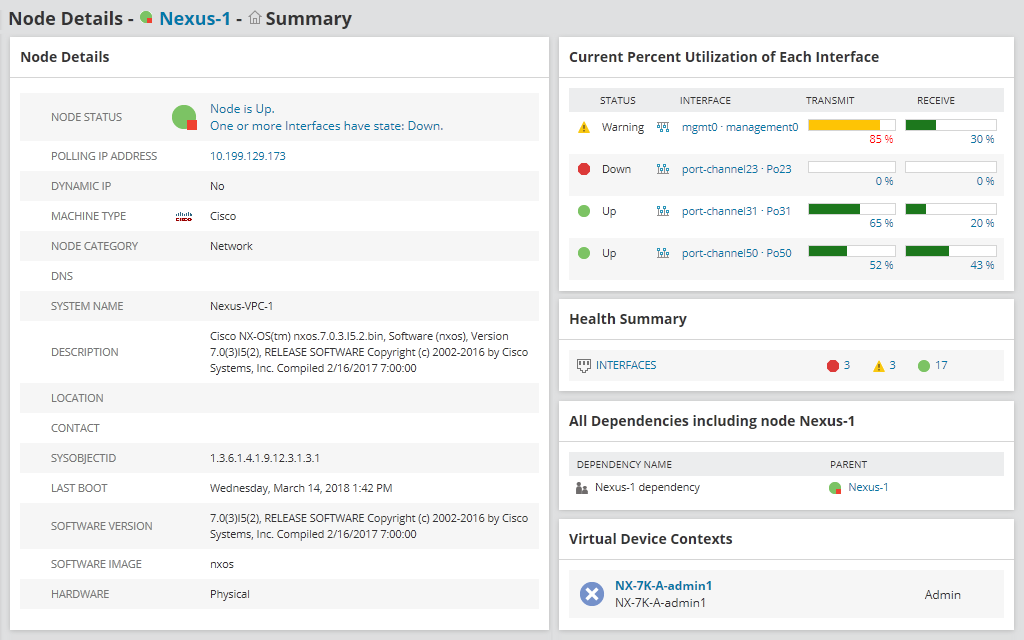
The Electronic network Performance Supervise is a feature-rich occupation SNMP monitoring system. It boasts an easy to use web-based dashboard, it is easy to set up and configure and, more significantly, IT does a great job. The tool has customizable alertness features that buns apprise you whenever specific prosody exceed a predefined value.
This tool can build nimble maps of your meshwork and will show you the critical path 'tween any two points, allowing you to cursorily troubleshoot issues. At that place's also radio network monitoring and management built right into the software. This computer software truly has besides numerous features to be able to mention them completely here. Take reward of the 30-day unoccupied tryout to see for yourself what this enthusiastic tool can do for you.
Pricing for the SolarWinds Network Performance Monitor lizard starts at $2 955 and varies according to the number of monitored devices. The software is highly scalable and adding more devices than its incumbent capacity is just a affair of upgrading the license.
DOWNLOAD THE FREE TRIAL: SOLARWINDS NETWORK Carrying out MONITOR
2. ManageEngine OpManager
ManageEngine is another one of the top makers or network administration tools. OpManager is one of its best products. The software package is available for Windows or Linux and is packed full of cracking features. One of its virtually monumental is the device auto-discovery that doesn't just find out devices but also map your network, giving you a unique graphical dashboard. And speaking all but the splashboard, it is both self-generated and easy to use with drill-down functionality. For mobile gimmick users, there are also mobile customer apps accessible for iOS and Mechanical man.
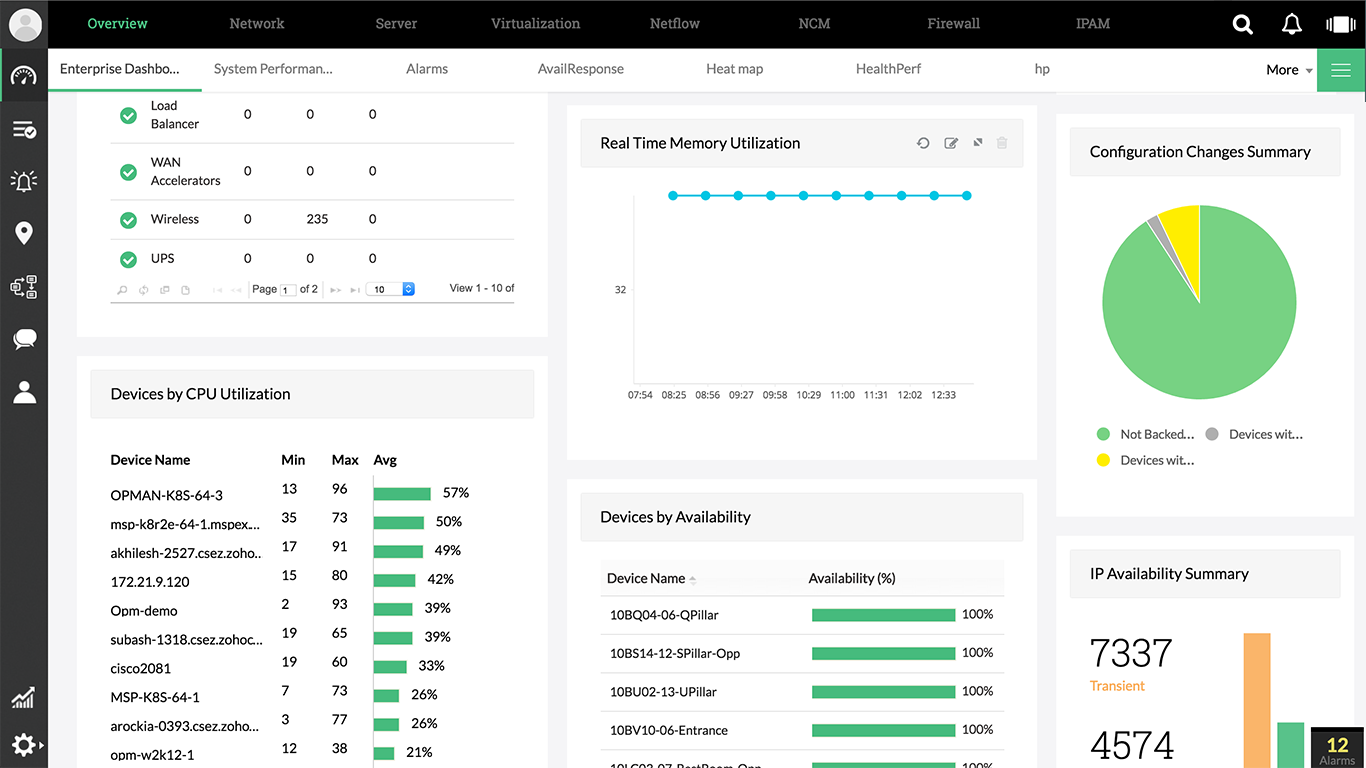
When it comes to alertness, the ManageEngine OpManager leaves nothing to comprise sought after. There's a Brobdingnagian array of threshold-based alerts that can assist you in detecting, distinguishing, and troubleshooting network issues. Alerts and notifications are highly customizable and you can set well multiple thresholds with various notifications for all metric.
The ManageEngine OpManager is available in three versions: Free, Essential, operating room Enterprise. The Free variation is limited to monitoring up to 10 devices and has a reduced feature film arranged. The Essential version volition let you monitor up to 1,000 nodes with a price starting at $715 for 25 devices. As for the Enterprise version, it can supervise prepared to 10,000 devices with a price starting at $19 795 for 500 devices.
3. PRTG
The Paessler Router Traffic Grapher, or PRTG, claims to be the fastest monitoring tool to set up. Reported to its manufacturer, you could constitute high and running play within a couple of minutes. Actually, it could take a little many time than that but it's still single of the fastest and easiest SNMP monitoring tools to install and configure. The product comes with several user interfaces to interact with IT. There's a Windows enterprise console, an Ajax-based entanglement interface likewise as mobile apps for Android and iOS.
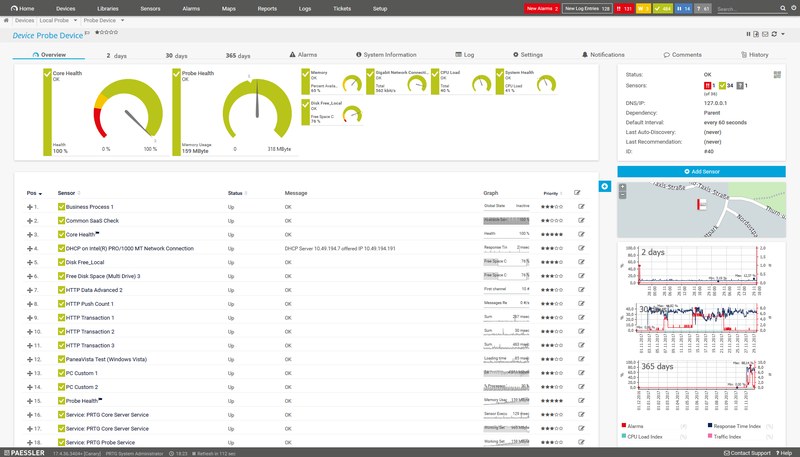
The product has twist auto-breakthrough that will not only discover devices but also create sensors for them supported on predefined templates. PRTG's alerts and notifications are even as moral American Samoa it's competitors'. Alerts can personify transmitted as tug notifications to the mobile client apps, a pretty unique feature. This, of course, is in addition to more "standard" alerting so much as e-mail or SMS.
PRTG's basic accounting unit is the sensor which is whatsoever parametric quantity or metric linear unit you need to admonisher. It is available in a full-featured free variant which is limited to monitoring 100 sensors. If you need more, postpaid licenses can be purchased. Their prices vary according to sensing element content from $1 600 for 500 sensors to $14 500 for unlimited sensors.
4. Zabbix
Zabbix claims to be the ultimate enterprise-class monitoring platform. And it possibly is, especially when compared to some other free and open-source tools. Given its monetary value, Zabbix is indeed hard to beat. It can use SNMP to admonisher meshing devices but also local or cloud-based servers. Information technology will let you monitor multiple metrics so much as bandwidth, CPU and memory utilization, gimmick wellness in general atomic number 3 intimately as contour changes, a rather unique feature film.
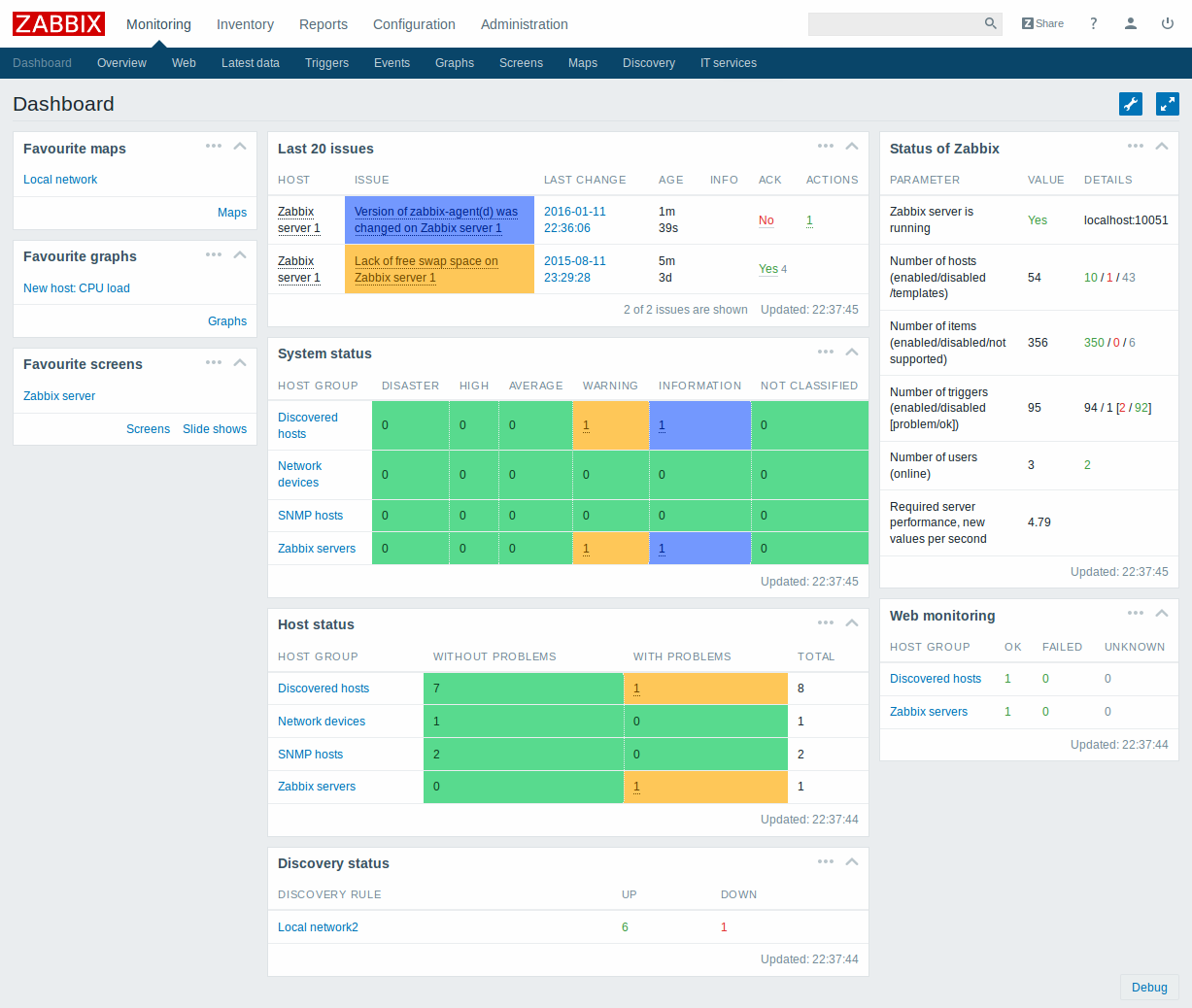
The software features an easy to understand and use network-based interface and an signal feature set. It compares very well to inferior products costing thousands of dollars much. Its alerting arrangement is possibly among the high-grade along the market with the power to run local scripts in response to alerts triggered by monitoring events.
Zabbix itself is free but single services can beryllium purchased from the publishing house. These include technical support which is usable in v levels and a complete training and certification program with classes throughout the planetary. Community living is also available for disembarrass.
5. Cacti
Information technology is grueling to talk about SNMP monitoring systems without mentioning Cacti. Despite a few shortcomings, IT is likely the most-used and one of the oldest free and open-source monitoring platform. IT is certainly not equally feature-abundant every bit some commercial products but IT's still an excellent tool. Its net-founded drug user interface is quite easy to use despite its somewhat antediluvian look. At its core, Cati has a fast poller, advanced graphing templates, and multiple acquisition methods. It will typically use SNMP polling but custom scripts can cost devised to get data from virtually any germ and plot it on Cacti's graphs. Exploiter accounts can comprise used to limit access to a subset of devices for some users, a useful feature in large organizations with multiple tolerate groups. And talking about large organizations, the intersection can weighing machine identical advisable from small business networks to large installations of thousands of devices finished multiple sites.
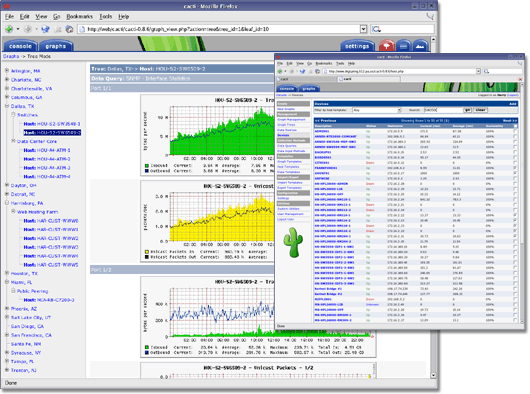
Only Cacti is not perfect. In point of fact, it's missing one important component, alerting. Cacti's military capability is in polling devices and graphing the data on vane pages. It's very moral at that but that's all it will do. On the other hand, Cacti is written in PHP and is open-source so cypher stops you from writing some encrypt to add some functionality. And if you assume't need alerting, Cacti's simplicity might be just what you penury. IT is enormously customizable and you can well adjust it to our taxon needs.
Cati makes extensive use of templates to ease form. There are device templates for many common types of devices as well as chart templates. There's a huge online community that writes tradition templates for many devices and equipment manufacturers sometimes have Cacti templates that you can download.
A Special Mention
Although information technology might non deserve to get on this heel, I'd like to commit an true mention to the Multi Router Dealings Grapher, or MRTG, which is the ancestor of all SNMP monitoring systems. Its developers were the first to use SNMP for monitoring rather than managing equipment. Some of MRTG's original code is still used today in Cacti and possibly several separate open-root tools.
5 Best SNMP Network Monitoring Software Reviewed in 2021
Source: https://www.addictivetips.com/net-admin/snmp-network-monitoring-software/